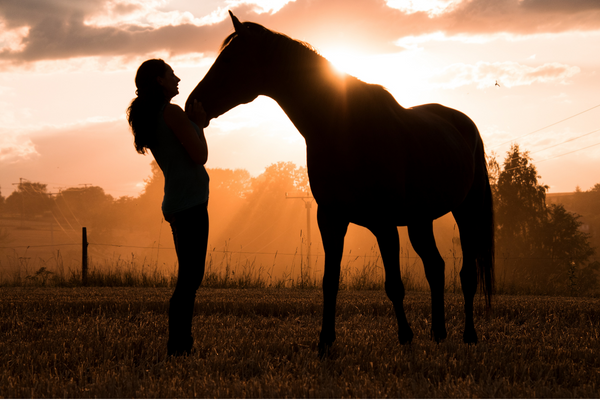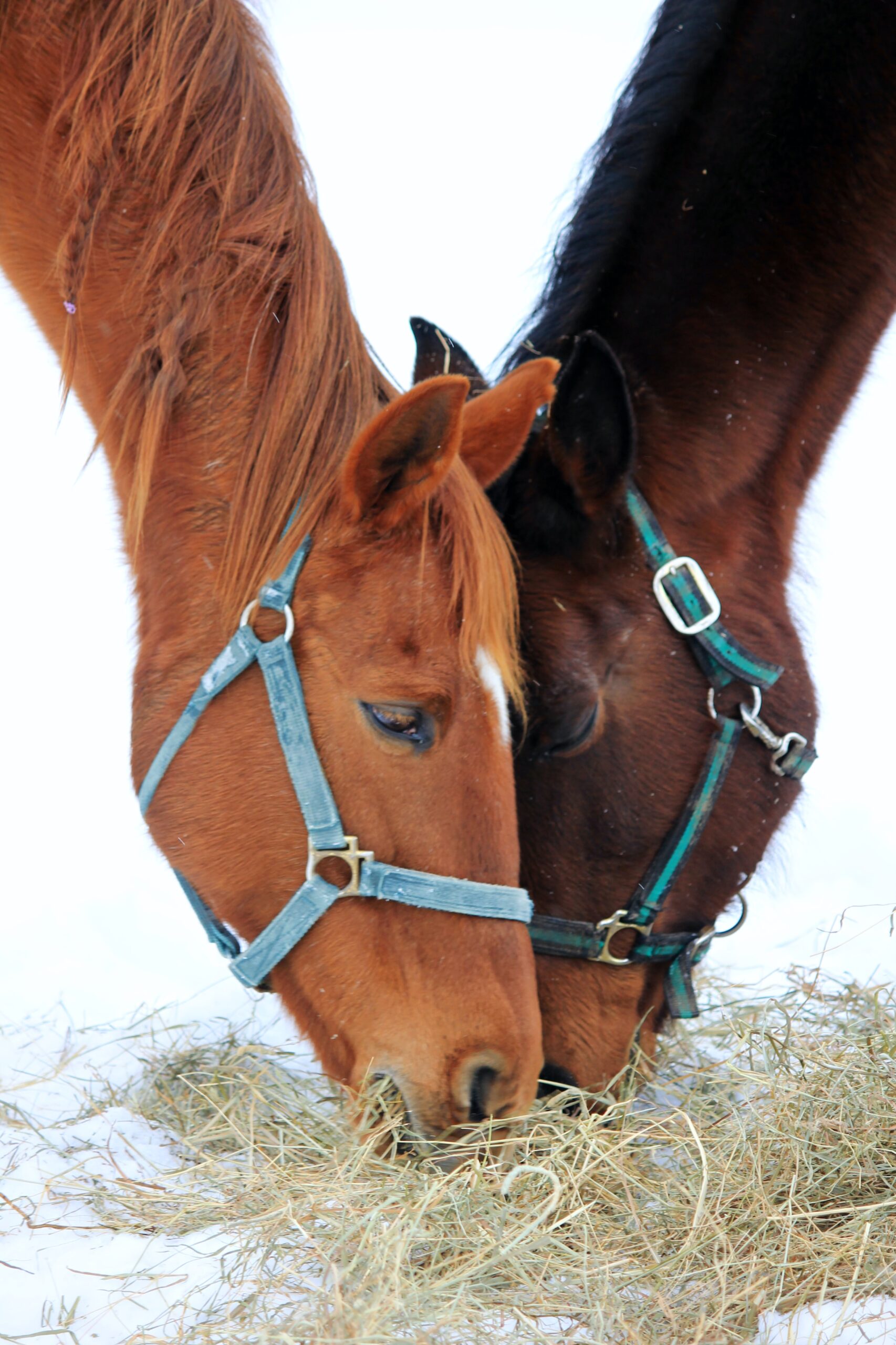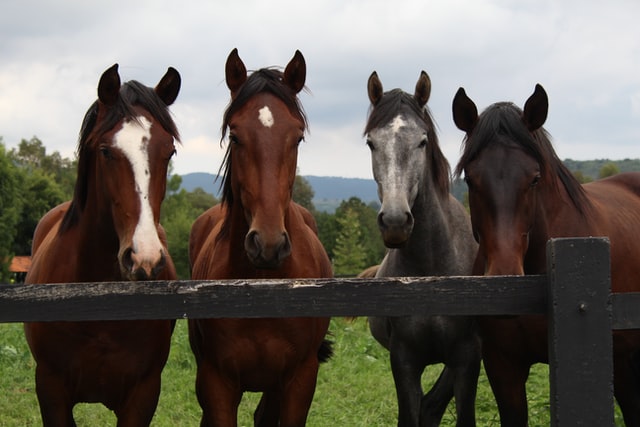The Top 10 Poisonous Plants For Horses
Whether you board or keep your horses are home, here are the top eleven Poisonous Plants For Horses to watch out for.
While most horses will avoid poisonous plants due to their bitter taste, some plants ingested in even small amount can cause weight loss, liver damage, respiratory failure, neurological signs and even sudden death.

As horse owners we of course want to protect our horses as much as possible, so the best way to protect our horses is to learn how to identify these plants and be aware of the clinical signs that they’ve ingested something they shouldn’t have.
For more blog posts on Horse Health Care, just out my complete list and sign up for our mailing list because I’m sending out new blog posts every week!
Top 11 Poisonous Plants For Horses
Whether you board or keep your horses are home, there are eleven poisonous plants to watch out for.
1. Rhododendron
Found all over, rhododendron is an ornamental shrub also known as Mountain Laurel.
While it is mainly found it Asia, it is also widespread throughout the highlands of the Appalachian mountains.
This beautiful shrub has bunches of brightly colored flowers that appear from late winter through early summer, making it a favorite in landscaping.
Azaleas are a subgroup of rhododendrons and are also toxic to horses.
It only takes a few leaves to cause serious problems for horses.
Typically they will avoid it because it is not very palatable, but if it is the only forage available, or they are particularly curious, it can be very dangerous.
The toxin in Rhododenron interferes with normal skeletal muscle, cardiac muscle and nerve function.
Symptoms include diarrhea, hyper-salivation, weakness, colic, depression, loss of coordination, stupor, leg paralysis, weak heart rate or laying down for more than two days.
After two days of symptoms, the horse will either get better, or slip into a coma and pass away.
2. Ragwort
Also known as cushag, common ragwort, stinking willie, tansy ragwort, benweed, St James-wort, staggerwort, dog standard, or just tansy.
Native to Eurasia, it has spread throughout most of the world as a common weed.
Eating ragwort is toxic to the horse’s liver.
The effect can be cumulative, meaning the toxin builds up in your horse’s liver.
Eating small amounts of ragwort over time will have the same effect as eating a lot of it all at once.
Symptoms include lethargy, photo-sensitivity, weight lose, blindness, difficulty breathing, staggering or standing while pushing their heads against a wall or tree.
Eventually your horse will have liver failure and the horse will pass away.
3. Oleander
Oleander, or Nerium, is a shrub or small tree in the dogbane family.
And like dogbane, all parts of the oleander plant are poisonous.
It is often used as an ornamental plant because it’s white, pink or red flowers are beautiful.
It’s native habitat is tropical, but it grows as far North in the US as Virginia.
In horses, ingesting as little as one ounce of leaves can be lethal.
Horses will often pass away within 8-10 hours of consuming oleander.
Symptoms include colic, diarrhea, labored breathing, muscle tremors, ataxia, and the inability to stand.
4. Yellow Starthistle
This common plant, also known as golden starthistle, yellow cockspur and St. Barnaby’s thistle, the yellow starthistle can be found in Eurasia, Australia, Argentina, Chile and the US.
It is toxic to horses after 60-200% of the horse’s body-weight is consumed over an extended period.
It is drastically more dangerous when it is the only forage available to the horse, or dried in baled hay.
The neurological condition that results is called ‘centaurea solstitialis’ or “chewing disease”.
Symptoms of yellow star-thistle toxicity include motions as if the horse is chewing, holding his mouth open, or an inability to open their mouth, chewing food and then spitting it out, inability to eat or drink, yawning, head tossing, and choking.
Unfortunately, since yellow star thistle toxicity is cumulative, by the time your horse displays symptoms, there is no cure.
Your vet may recommend supportive care but eventually the horse will pass away.
5. Ornamental Yew
Yews are beautiful small to medium-sized evergreen trees that can live for an exceptionally long time.
The bark is thin, scaly brown and the seeds are a bright-red fleshy berry.
The leaves are flat, pointed, and darker green on top than on the bottom.
There are many different types of yew, but they’re all toxic to horses.
Japanese yew has been used a lot in ornamental landscaping.
After a horse has ingested yew, symptoms of toxicity usually occur within a few hours.
They include loss of muscle control, stumbling, trembling, problems with breathing, a slower heart rate, diarrhea, convulsions, collapse and finally death.
6. Hemlock
Hemlock, also known as, English hemlock, water hemlock, poison hemlock, Australian carrot fern, poison parsley, spotted corobane and spotted hemlock.
It’s a green flowering plant that resembles queen anne’s lace.
It’s often found in disturbed, poorly drained soil near streams and swampy areas.
It can grow up to 7 feet tall, and contains white clustered flowers.
Symptoms of hemlock poisoning include muscle tremors, weakness, lack of coordination, excessive salivation, slow heart rate, frequent urination and defecation, colic, dilated pupils, and coma.
A lethal dose of Hemlock is 0.2%-0.8% of his body weight (roughly 2-8 lbs for a 1000 lbs animal).
7. Deadly Nightshade
Deadly nightshade, or atropa belladonna, is native to Europe and Northern Africa, but has also been introduced to Canada and the United States.
Also known as black nightshade, all parts of the plant are extremely toxic and cause delirium and hallucinations when ingested.
Deadly nightshade has small, white, star-shaped flowers, and green berries that ripen to black or dark purple.
Generally speaking, your horse will avoid eating deadly nightshade, however, if it is bailed up in hay, or cut in the hay fields, or the only thing available, they may ingest large quantities accidentally.
Signs of toxicity are irregular heart rate, blindness or sensitivity to light, hyper-excitability or nervousness, convulsions, disorientation, and eventually death.
8. Bracken Fern
“Bracken” is a genus of large, coarse ferns.
They have wide, triangular leaves and are popular ornamental perennials.
The entire plant contains an enzyme called Thiaminase, which inhibits Vitamin B.
Symptoms of bracken fern poisoning are an unsteady gait, flanks that have a “tucked up” appearance, congestion, agitation, standing with legs splayed apart, stumbling and falling, muscle tremors, dilated pupils and heart rhythm abnormalities.
Luckily, if your Vet diagnoses your horse with Bracken Fern poisoning, there are some treatments available such as Thiamine injections and antibiotics.
9. Chokecherry
Also called bitter-berry or Virginia bird cherry, this small shrub is native to North America and most of Canada.
It’s an incredibly common poisonous plants for us here in Virginia.
It has oval leaves with a serrated margin.
It has bunches of beautiful white flowers with a strong aroma in the late spring.
These flowers later produce bunches of small dark red to black cherries.
The leaves and seeds of the chokecherry tree contain cyanide, which is deadly toxic.
Death occurs within minutes to a few hours.
If you’ve ever found a horse dead in the pasture, with no other signs, it could’ve been to chokecherry poisoning.
Cyanide stops red blood cells from breathing, essentially suffocating the horse’s body.
Symptoms of chokecherry poisoning include labored breathing, loss of bladder and bowels, severe trembling, and seizures.
10. Horsetail
Horsetail, aka snake grass or puzzlegrass, is a prehistoric vascular plant that reproduces by spores (instead of seeds).
It is comprised of green, hollow, jointed stems and thin whorls of leaves.
Just like bracken fern, horsetail contains thiaminase, which inhibits the function of Vitamin B in the horse.
Symptoms include un unsteady gait, flanks that have a “tucked up” appearance, congestion, agitation, standing with legs splayed apart, stumbling and falling, muscle tremors, dilated pupils and heart rhythm abnormalities.
11. Poisonous Plants For Horses – Black Walnut Tree
Black walnut trees, while not toxic if eaten, black walnut shavings and the nuts themselves contain a toxic substance called jugalan that is dangerous to horses.
Bedding containing as little as 20% of black walnut shavings can cause toxicity.
While you make not think of this in a pasture, if you’ve cut down a black walnut tree in your field or around your fence lines, your horse may accidentally stand on large amounts of the saw dust without knowing.
Immediate signs and symptoms include depression, stocking up, acute laminitis, stiff gait, reluctance to move.
After prolonged exposure you will see flared nostrils, colic, swelling of the chest and neck, high heart and breath rates, high body temperature and possibly severe coffin bone rotation if laminitis is allowed to progress.
To treat, remove the black walnut shavings as soon as possible. Your vet may prescribe a mild sedative or nonsteroidal anti-inflammatory drug.
Now that we know the most common eleven poisonous plants for horses, we’ll know which to avoid planting in and around where our horses are.
For a complete list, check out Penn State’s Plants Toxic to Horses List.



